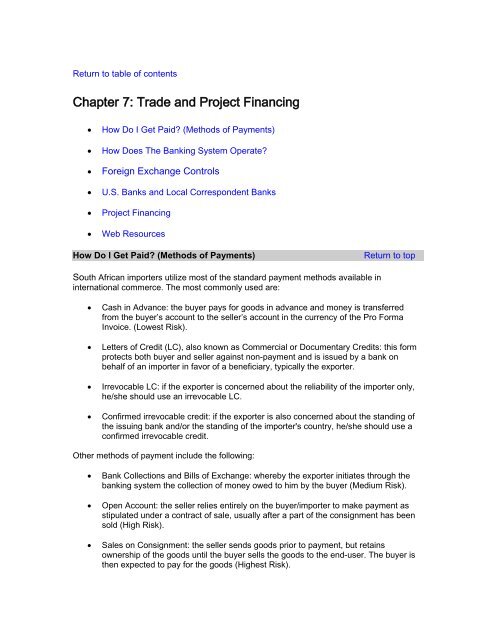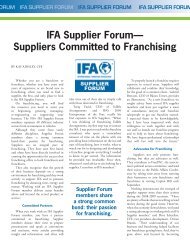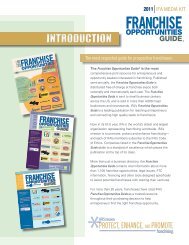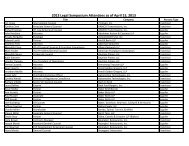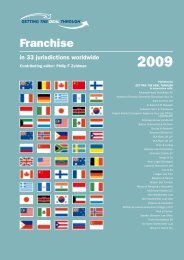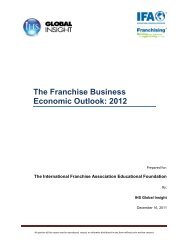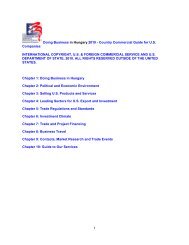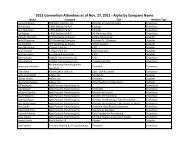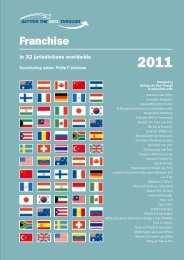South Africa - International Franchise Association
South Africa - International Franchise Association
South Africa - International Franchise Association
Create successful ePaper yourself
Turn your PDF publications into a flip-book with our unique Google optimized e-Paper software.
Return to table of contents<br />
Chapter 7: Trade and Project Financing<br />
• How Do I Get Paid? (Methods of Payments)<br />
• How Does The Banking System Operate?<br />
• Foreign Exchange Controls<br />
• U.S. Banks and Local Correspondent Banks<br />
• Project Financing<br />
• Web Resources<br />
How Do I Get Paid? (Methods of Payments) Return to top<br />
<strong>South</strong> <strong>Africa</strong>n importers utilize most of the standard payment methods available in<br />
international commerce. The most commonly used are:<br />
• Cash in Advance: the buyer pays for goods in advance and money is transferred<br />
from the buyer’s account to the seller’s account in the currency of the Pro Forma<br />
Invoice. (Lowest Risk).<br />
• Letters of Credit (LC), also known as Commercial or Documentary Credits: this form<br />
protects both buyer and seller against non-payment and is issued by a bank on<br />
behalf of an importer in favor of a beneficiary, typically the exporter.<br />
• Irrevocable LC: if the exporter is concerned about the reliability of the importer only,<br />
he/she should use an irrevocable LC.<br />
• Confirmed irrevocable credit: if the exporter is also concerned about the standing of<br />
the issuing bank and/or the standing of the importer's country, he/she should use a<br />
confirmed irrevocable credit.<br />
Other methods of payment include the following:<br />
• Bank Collections and Bills of Exchange: whereby the exporter initiates through the<br />
banking system the collection of money owed to him by the buyer (Medium Risk).<br />
• Open Account: the seller relies entirely on the buyer/importer to make payment as<br />
stipulated under a contract of sale, usually after a part of the consignment has been<br />
sold (High Risk).<br />
• Sales on Consignment: the seller sends goods prior to payment, but retains<br />
ownership of the goods until the buyer sells the goods to the end-user. The buyer is<br />
then expected to pay for the goods (Highest Risk).


